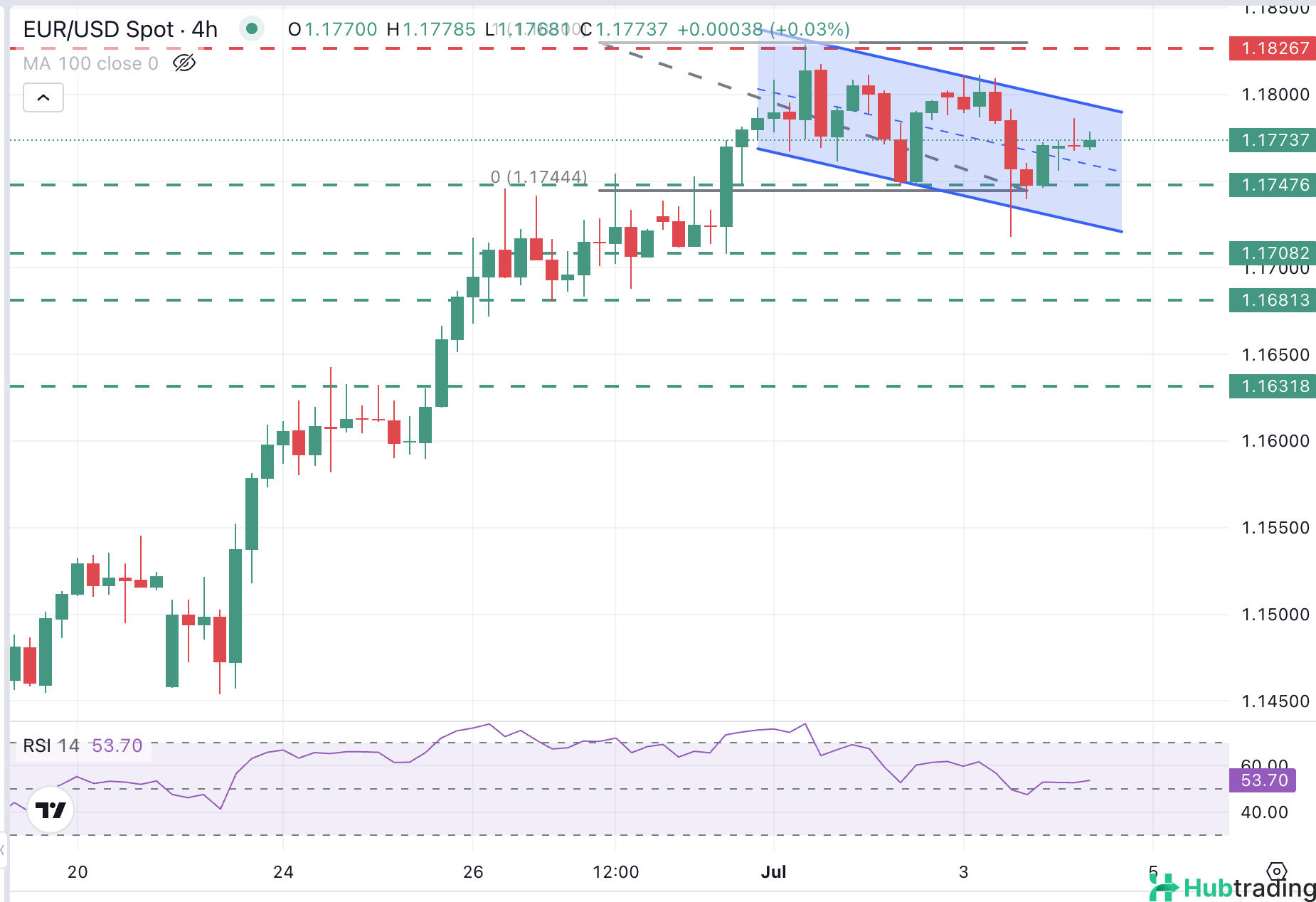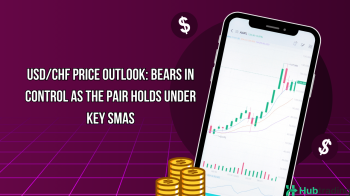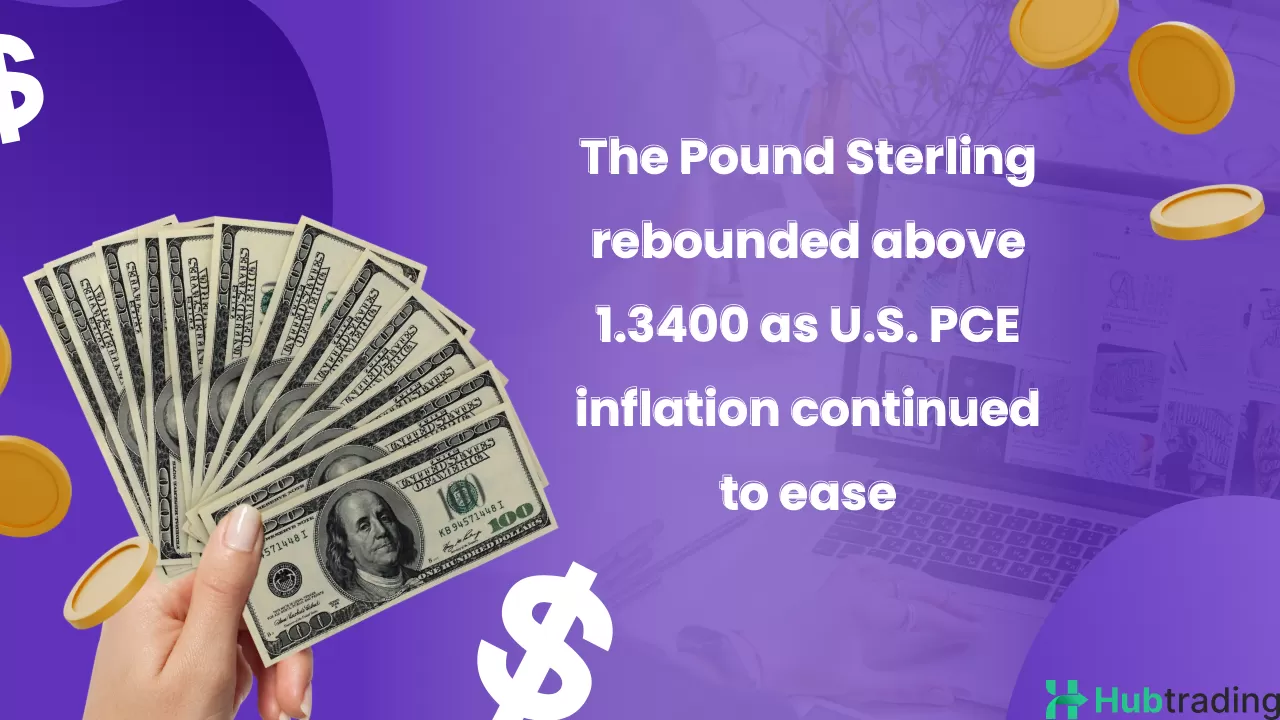-
The Euro strengthens as the effect of the strong US Nonfarm Payrolls report begins to wane.
-
Mounting concerns over tariffs and US fiscal stability weigh on the US Dollar.
-
ECB President Lagarde signals a steady rate outlook during an interview on Friday.
The EUR/USD pair trimmed earlier losses on Friday, climbing toward the upper end of the 1.1700 range as the US Dollar gave back its post-NFP gains. The Greenback is under renewed pressure amid rising concerns over tariffs and a hawkish tone from European Central Bank (ECB) President Christine Lagarde.
With limited progress on new trade agreements, President Trump confirmed plans to begin notifying trading partners on Friday about new tariffs on their exports. Market fears that elevated tariffs could stoke inflation and drag on economic growth have been weighing on the Dollar since April’s “Liberation Day.”
Adding to the pressure, Trump’s “big, beautiful tax bill” cleared the House of Representatives on Thursday and is expected to be signed into law soon. The Congressional Budget Office (CBO) projects the bill will add $3.3 trillion to the current $39.2 trillion fiscal deficit over the next decade, fueling concerns about the long-term sustainability of US debt and increasing downside risks for the Dollar.
Meanwhile, ECB President Lagarde, in an interview on Friday, expressed confidence in the eurozone’s monetary stance, stating the ECB is “in a good position now” and remains committed to its 2% inflation target. Her remarks effectively ruled out another rate cut at the upcoming July meeting, providing support for the Euro.
The US Dollar had rallied briefly on Thursday after the June Nonfarm Payrolls (NFP) report beat expectations, showing strong job creation and underscoring labor market resilience. However, the upbeat data reduced market expectations of an imminent Federal Reserve rate cut. According to the CME FedWatch Tool, the probability of a rate cut in July has now dropped to 5%, down from nearly 20% prior to the NFP release.
Daily Digest Market Movers: EUR/USD Stalls in Rangebound Trade Amid US Holiday, Eurozone Weak Data
- The EUR/USD pair is trading within Thursday’s range on Friday, showing modest weekly gains in subdued market conditions. With US markets closed for Independence Day and the Eurozone lacking any major economic releases, the pair is likely to complete an “inside day,” reflecting low volatility and volume.
- Thursday’s US data provided a temporary boost to the Dollar. The Nonfarm Payrolls (NFP) report showed a net gain of 147,000 jobs in June, surpassing forecasts of 110,000. Additionally, the Unemployment Rate dropped to 4.1% from 4.2%, defying expectations of a rise to 4.3%. Later, the ISM Services PMI indicated a rebound in activity, with June’s reading improving to 50.8 from 49.9 in May, beating the consensus estimate of 50.5.
- In contrast, Eurozone economic data released Friday disappointed. Germany’s Factory Orders fell by 1.4% in May, a sharp miss compared to the expected 0.1% decline and a notable drop from April’s 1.6% growth. Similarly, France’s Industrial Output contracted 0.5% in May, following a 1.4% decline in April and falling short of the expected 0.3% rebound. These figures highlight the persistent weakness in the Eurozone’s key economies, likely putting pressure on the Euro in the near term.
- On a more positive note, Eurozone services data showed slight improvement. The final HCOB Services PMI for June was revised upward to 50.5 from a preliminary 50.0, signaling a return to expansion after May’s 49.7. However, the report noted subdued demand, and the market reaction was limited.
Technical Outlook: EUR/USD Struggles to Sustain Gains Near 1.1800

EUR/USD has been consolidating gains this week after touching a nearly four-year high at 1.1830. Despite the bullish run, the pair is losing momentum as it struggles to hold above the 1.1800 mark. The 14-period Relative Strength Index (RSI) is hovering near the neutral 50 level, suggesting a loss of bullish strength.
Thursday’s lower low adds to the bearish bias, though the pair has yet to confirm a break below the 1.1745–1.1750 support zone, which includes key highs from June 26–27 and the July 2 low. A drop below this region could open the door to further downside toward the June 30 low at 1.1710 and the June 27 low at 1.1680.
On the upside, immediate resistance lies at 1.1800, where trendline resistance from Monday’s highs converges. Further hurdles are located at 1.1825 (weekly high) and 1.1850, which marks the 127.2% Fibonacci extension of the July 1–2 correction.





